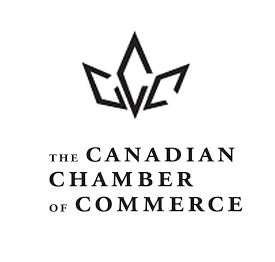
We collect basic website visitor information on this website and store it in cookies. We also utilize Google Analytics to track page view information to assist us in improving our website.
Tariffs and Trade Updates and Information, visit www.chambercheck.ca
|
|
||
|
It has been nearly two decades since a rudimentary prototype of Twitter began to take shape in 2006 and quickly gained traction resulting in more than 100 million users producing 340 million tweets daily by 2012.
Seen initially as a great tool for businesses to promote their brands and messaging, the platform has undergone dramatic changes since billionaire Elon Musk’s takeover of X (formerly Twitter) in late 2022, and that has left businesses and advertisers re-evaluating their presence.
His vision for X as a “free speech” platform has been polarizing, with critics pointing to the rise in hate speech and misinformation. These concerns, coupled with strategic missteps, have led some businesses to leave the platform entirely or significantly reduce their advertising spend.
“None of the businesses I work with are using X right now because it just doesn't seem like a credible platform and they don't want to be associated with that right now,” says social media expert Ashley Gould, owner of Cinis Marketing.
“I think the premise of what Elon Musk was trying to do originally by opening it up with a huge emphasis on freedom of speech was meant to try and make it a safe space for everybody. The problem is we all don't share the same opinions and we don't share the same beliefs.”
Advertisers’ confidence eroded
As a result, she says those who thrive on hate mongering and perpetuating conspiracy theories have clearly found a home on X thanks to Musk’s decision to overhaul content moderation policies. A similar move also recently embraced by Meta CEO and founder Mark Zuckerburg for Facebook and Instagram.
Under previous management, Twitter (X) maintained strict guidelines to ensure a safer environment for users and advertisers. However, Musk’s looser approach has made some companies wary of associating their brands with potentially controversial or harmful content.
The New York-based Anti-Defamation League and other watchdog groups have reported spikes in hate speech and abusive language on the platform which has further eroded advertiser confidence.
Additionally, changes to the verification system—transitioning from a badge earned through authenticity to one purchased through Twitter Blue subscriptions—have muddied the waters for users and advertisers alike. The proliferation of impersonation accounts and disinformation has made it challenging for brands to trust the platform as a reliable advertising space.
Despite these challenges, X retains some unique advantages thanks to its real-time, text-focused format which remains unmatched for breaking news and direct communication. As a result, Ashley urges businesses not to delete their X accounts just yet.
Re-evaluate social media platforms
“But I wouldn't utilize it either because it actually could decrease your credibility if you're on there because people may make the assumption that you're ‘enjoying’ the drama.”
Instead, Ashely recommends re-evaluating your focus on social media platforms that would work better to promote your business’ brand, such as Instagram, Threads, Snapchat or Bluesky, even if your X (Twitter) account still retains thousands of followers.
“The ethical people that you’re looking to communicate with aren’t all on Twitter right now,” she says. “Even if they say they are and they’re still a follower, they’re not really there.”
Competitors of X, like Instagram, TikTok, and LinkedIn, have taken this opportunity to attract disillusioned businesses. These platforms offer more sophisticated targeting tools, robust safety features, and higher engagement rates, making them attractive alternatives for advertisers.
Meta’s Threads, a text-based platform launched in mid-2023, quickly gained traction as a ‘Twitter alternative’, luring away both individual users and businesses looking for a less volatile environment. As well, Bluesky introduced a suite of anti-toxicity features this past summer to combat harassment and provide a more ‘user friendly’ experience.
Multiple platforms not necessary
“It’s good to go with social media platforms that verify and are trying to keep the spam out,” says Ashely, adding it may not be necessary to be on multiple platforms depending on how you’re trying to promote your brand.
“You have got to step back and ask yourself what kind of content are you creating? Who are we trying to make it for? And then really focus on that community side, not that you have 50,000 followers. That’s great, but if nobody's talking to you where's the ROI?”
As X continues to evolve, the long-term viability of its business model remains in question as Musk mulls over potential plans, such as integrating payment systems and expanding into content creation. However, the platform’s reputation as a stable and trustworthy space for businesses has been significantly tarnished.
For now, the exodus of advertisers serves as a cautionary tale about the delicate balance between free expression and the need for moderation in digital spaces.
“They broke it (X) in two years, maybe they can fix it two years?” jokes Ashely. “Unfortunately, my crystal ball is broken, so I can't see if that's actually going to happen.”
Tips for Businesses When Selecting Social Media Platforms:
1. Understand Your Target Audience Before diving into any platform, research your audience's demographics, interests, and online habits. Platforms like TikTok appeal to younger users, while Facebook often caters to an older demographic. LinkedIn is ideal for B2B professionals, while Instagram attracts visual-centric audiences. The more aligned the platform is with your audience, the more effective your efforts will be.
2. Define Your Goals Are you looking to drive website traffic, increase brand awareness, generate leads, or build a community? For example, Instagram and Pinterest are great for showcasing products, while Twitter excels in real-time engagement. Matching your goals with platform strengths ensures better ROI.
3. Consider Content Formats Different platforms excel in specific content types. Instagram and TikTok thrive on short, engaging video content, while LinkedIn favors professional articles and thought leadership. If you lack resources for creating high-quality videos, focusing on text-based platforms like Twitter or LinkedIn might be more manageable.
4. Assess Your Industry Presence Analyze where your competitors and industry leaders are most active. While you shouldn’t copy them outright, understanding their strategies can help you identify relevant platforms and trends. A strong presence in the right niche can give your business a competitive edge.
5. Evaluate Platform Features and Costs Some platforms may require higher advertising budgets to be effective, while others offer organic reach opportunities. Look into ad pricing, analytics tools, and features like shopping integrations to determine if a platform aligns with your budget and business model.
6. Start Small and Scale It’s better to focus on one or two platforms and excel rather than spreading resources thin. Once you’ve established a strong presence, expand to other platforms that align with your strategy.
7. Monitor and Adapt Social media trends evolve quickly. Regularly analyze performance metrics, keep an eye on emerging platforms, and adapt your strategy as needed to stay ahead. |
||
|
||
|
||
|
||

|
|
Brian Rodnick 251 July 2, 2025 |

|
|
Greg Durocher 41 July 28, 2023 |

|
|
Canadian Chamber of Commerce 24 January 29, 2021 |

|
|
Cambridge Chamber 2 March 27, 2020 |